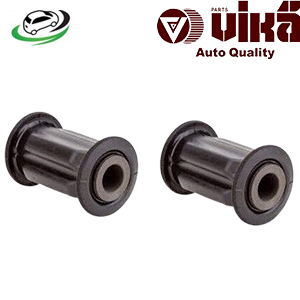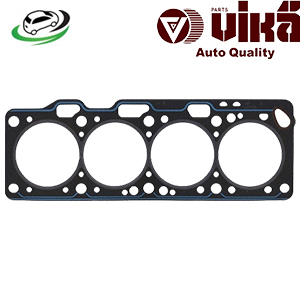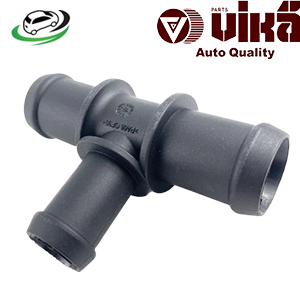-16%
Get VW CC 3.6L V6/ e-Golf -L/ Eos 3.2L V6/ Golf 2.5L/ Jetta 2.5L/ Passat 3.6L V6/ R32 3.2L V6/ Rabbit 2.5L/ Touareg 3.0L V6 Coolant Flange N90794401
The coolant flange is an integral component in a vehicle’s cooling system. It serves as a connection point for various coolant hoses and plays a vital role in regulating the flow of coolant throughout the engine and radiator. Understanding the functions, importance, maintenance practices, and common issues associated with coolant flanges is essential for vehicle owners and automotive professionals alike.
Functions of the Coolant Flange
- Connection Point: The primary function of the coolant flange is to serve as a connection point between the engine block, cylinder head, and various coolant hoses. It helps create a secure pathway for coolant to flow between these components, facilitating effective cooling.
- Coolant Flow Regulation: The coolant flange plays a role in regulating the flow of coolant within the cooling system. By directing the flow from the engine to the radiator and back, it ensures that the engine maintains an optimal operating temperature.
- Thermostat Housing: In many vehicles, the coolant flange houses the thermostat, which monitors the temperature of the engine coolant. The thermostat regulates coolant flow based on the engine temperature, allowing for efficient heat dissipation and preventing overheating.
- Sealing and Pressure Maintenance: The coolant flange is designed to maintain a sealed connection between different components of the cooling system. This sealing capability helps maintain the necessary pressure within the system, preventing coolant leaks and ensuring efficient operation.
- Facilitating Engine Cooling: By providing a secure pathway for coolant flow, the coolant flange ensures that the engine is adequately cooled. This is crucial for preventing overheating, which can lead to severe engine damage.
Importance of the Coolant Flange
- Engine Temperature Regulation: The coolant flange is vital for maintaining the engine’s temperature within the optimal range. Proper temperature regulation is essential for engine performance, fuel efficiency, and longevity.
- Prevention of Overheating: A malfunctioning coolant flange can disrupt the flow of coolant, leading to overheating. Overheating can cause significant damage to the engine, including warped cylinder heads and blown head gaskets. The coolant flange’s role in maintaining coolant flow is crucial for preventing such issues.
- Enhancing Cooling System Efficiency: The coolant flange contributes to the overall efficiency of the cooling system. By ensuring a secure connection between various components, it minimizes the risk of leaks and allows for optimal coolant circulation.
- Supporting Vehicle Performance: A properly functioning coolant flange helps ensure that the engine operates efficiently. This efficiency translates to improved vehicle performance, including better acceleration and fuel economy.
- Cost-Effectiveness: Regular maintenance of the coolant flange can prevent costly repairs associated with coolant leaks and engine overheating. Addressing potential issues early can save vehicle owners significant amounts in repair costs.
Materials Used for Coolant Flanges
- Aluminum: Many coolant flanges are made from aluminum due to its lightweight, corrosion-resistant properties, and excellent heat transfer capabilities. Aluminum flanges are commonly used in modern vehicles for their durability and efficiency.
- Plastic: Some coolant flanges are constructed from high-quality plastic materials. Plastic flanges are lightweight and resistant to corrosion but may be more susceptible to damage from heat and UV exposure.
- Steel: In certain applications, steel may be used for coolant flanges, especially in high-performance or heavy-duty vehicles. Steel flanges offer enhanced strength and durability but can be heavier than aluminum or plastic alternatives.
- Composite Materials: Composite materials are sometimes used to create coolant flanges that offer a combination of lightweight construction and resistance to heat and corrosion. These materials can provide good sealing capabilities while minimizing weight.
Maintenance of the Coolant Flange
- Regular Inspections: Routine inspections of the coolant flange should be part of regular vehicle maintenance. Look for signs of leaks, cracks, or damage that may indicate a need for replacement.
- Check for Coolant Leaks: Monitor for signs of coolant leaks around the flange. Leaking coolant can lead to low coolant levels, resulting in overheating and engine damage.
- Inspect Seals and Gaskets: The seals and gaskets associated with the coolant flange should be inspected regularly. Worn or damaged seals can lead to leaks, compromising the cooling system’s efficiency.
- Monitor Engine Temperature: Keep an eye on the engine temperature gauge while driving. If the gauge indicates overheating, investigate potential causes, including issues with the coolant flange.
- Flush the Cooling System: Periodically flushing the cooling system helps remove debris and contaminants that can accumulate over time. This practice can help maintain the efficiency of the cooling system and the coolant flange.
- Use Manufacturer-Recommended Coolant: Always use the coolant recommended by the vehicle manufacturer. Using the wrong type of coolant can lead to corrosion and damage to the cooling system, including the coolant flange.
Common Issues Associated with Coolant Flanges
- Coolant Leaks: Coolant leaks are one of the most common issues associated with coolant flanges. Leaks can occur due to damaged seals, cracks in the flange, or improper installation. Leaking coolant can lead to low levels and overheating.
- Cracking or Warping: Exposure to extreme temperatures can cause plastic or aluminum coolant flanges to crack or warp. Cracked or warped flanges can disrupt coolant flow and lead to leaks, necessitating replacement.
- Thermostat Failure: If the coolant flange houses the thermostat, a failure of the thermostat can impact coolant flow regulation. A stuck-open thermostat can lead to inadequate heating, while a stuck-closed thermostat can cause overheating.
- Corrosion: Over time, coolant can become corrosive, leading to degradation of the coolant flange and surrounding components. Corrosion can result in leaks and reduced cooling system efficiency.
- Improper Installation: If the coolant flange is not installed correctly, it can lead to coolant leaks and poor sealing. Ensuring that the flange is installed per the manufacturer’s specifications is crucial for proper function.
- Contaminated Coolant: Contaminated coolant can lead to issues such as clogging and corrosion. Regularly flushing the cooling system and using the correct coolant can help prevent these problems.
Conclusion
The coolant flange is a critical component of a vehicle’s cooling system, playing an essential role in regulating coolant flow and maintaining optimal engine temperature. Its functions include providing connection points for coolant hoses, housing the thermostat, and ensuring proper sealing within the cooling system.
Regular maintenance and inspections of the coolant flange are crucial for preventing common issues such as leaks, cracking, and corrosion. By understanding the importance of this component and addressing wear and damage promptly, vehicle owners can enhance their cooling system’s performance and extend its lifespan.
Ultimately, investing time in the maintenance of the coolant flange is essential for achieving reliable engine performance and preventing costly repairs associated with overheating and coolant leaks. A properly functioning coolant flange not only contributes to efficient engine cooling but also plays a significant role in ensuring the vehicle’s overall safety and reliability.
Follow us on Facebook for more parts.




Reviews
Clear filtersThere are no reviews yet.